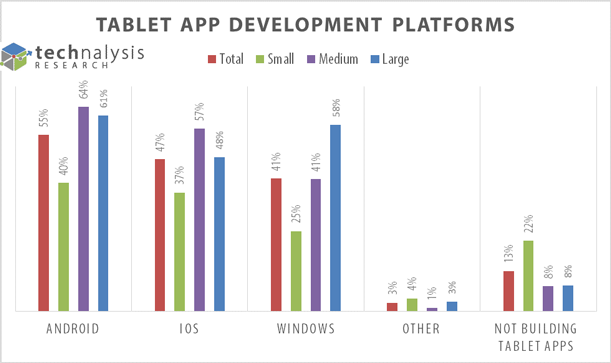| |
October 14, 2014
Does Big Data Equal Big Brother?
October 7, 2014
Is Windows Still Relevant?
September 30, 2014
Tablet and Smartphone Futures: Specialization
September 23, 2014
Is the App Ecosystem Sustainable?
September 16, 2014
The Wearable-Identity Connection
September 9, 2014
The Password Dilemma
September 8, 2014
Insider Extra: SanDisk--Driving Flash Forward
September 2, 2014
Smart Connected Devices: A New Forecast
August 26, 2014
Phablets—aka Pocket Computers—Drive New World Order
August 19, 2014
Device Usage Diversity
August 12, 2014
New Life for the PC
August 5, 2014
Hot Items for the Holidays: Large Phones, Notebooks and Smart TVs
July 29, 2014
Smartphones: Life's Remote Control
July 22, 2014
The Joy of Vintage Tech
July 15, 2014
Digital Generation Gap
July 8, 2014
Virtualization Reborn
July 1, 2014
Portable Digital Identities
June 24, 2014
The Future of UI: Contextual Intelligence
June 17, 2014
Moving to Markets of One
June 16, 2014
Insider Extra: Dell and the Battle for Business
June 10, 2014
Screen Overload to Drive Screen-less Devices
June 3, 2014
Apple Drives Vision of Seamless Multi-Device Computing
May 27, 2014
Surface Pro 3: The Future of PCs?
May 22, 2014
Insider Extra: SanDisk: The Many Faces of Flash
May 20, 2014
The Technological Divining Rod
May 13, 2014
Computing in the Cloud
May 6, 2014
Device Usage a Question of Degree
April 29, 2014
The Next Smartphone Battleground: Durability
April 22, 2014
BYOD: A Work in Progress
April 18, 2014
Insider Extra: AMD Back in the Groove
April 15, 2014
The Mobility Myth
April 9, 2014
BYOD Dilemma: Devices vs. Data
April 8, 2014
Insider Extra: Qualcomm's Evolving Story
April 1, 2014
A Wearables Forecast
March 25, 2014
Measuring Success in Wearables? It's Thousands of Thousands
March 24, 2014
Insider Extra: Intel Strategy Moves Forward
March 18, 2014
IOT: Islands of Isolated Things?
March 11, 2014
Wearables Cautionary Tale
March 4, 2014
The New Platform Battle
February 25, 2014
Watch What Happens
February 18, 2014
Talkin' 'bout Touchpads
February 11, 2014
The MultiOS Conundrum
February 4, 2014
Computing Redefined
January 28, 2014
The Apple Problem
January 21, 2014
The 2-in-1s People Might Want
January 14, 2014
The Post Tablet Era
January 7, 2014
The Innovation Asymptote
December 31, 2013
Top 5 2014 Predictions
December 17, 2013
Holiday Shoppers Gifting Themselves
December 10, 2013
Companion Apps
December 3, 2013
Aisle Check
|
|
|














 |
October 14, 2014
The buzz that’s built around enterprise mobility has reached nearly deafening levels with seemingly everybody and their brother working on solutions to mobilize enterprise applications. Not surprisingly, the vast majority of the attention has been focused on bringing business apps to iOS and Android, given their dominant roles on smartphones and tablets.
In the process, many organizations have glossed over Windows, assuming that there wasn’t really any interest or value in creating mobile apps for the platform. The assumption seems to be primarily based on the tiny market share that Windows has garnered in the smartphone and tablet markets. While that’s an understandable and legitimate concern, it turns out it doesn’t really reflect what many companies are doing about custom mobile applications.
According to a survey my firm, TECHnalysis Research, fielded earlier this year with over 300 US-based IT professionals split evenly across small, medium and large businesses, custom Windows applications are actually being built by a very respectable 41% of companies surveyed. As the chart below shows, the number reaches 58% for large enterprise with 1,000 or more employees.

©2014, TECHnalysis Research
While those figures may seem puzzling to some, I believe there are some very logical reasons why they are where they are. First, most organizations that have in-house programming teams have a strong bias towards Windows because that’s what they know. Custom Windows desktop applications have been the lifeblood of many companies for over two decades, so it should be no surprise to anyone that the majority of a company’s in-house programming teams are going to know Windows and want to leverage that expertise.
In a related way, most of the custom applications that a company already has in use are likely to be Windows-based. Given that many mobile applications are being written to build onto the existing custom applications and data files that an organization has, the choice of Windows for mobile applications makes sense.
In addition, Microsoft has been offering a broad range of programming tools for custom enterprise applications for a very long time. The company is widely known for the general quality and scope of their tools, so again, it makes sense to use the tools companies have available. While custom programming tools for the other mobile platforms are certainly growing at a rapid pace, it will be a while before they have the same range of choices designed specifically for in-house business application programmers that Microsoft does.
Finally, another point to consider is that given the growth of touch-based Windows notebooks and Microsoft’s move to a common set of APIs across various flavors of Windows, companies can build applications that will run both on Windows-based tablets, as well as touch-based Windows PCs or 2-in-1 devices. While Windows 8 and 2-in-1 deployments in enterprise have been modest to date, many organizations like to plan and build for the future. With the promising prospects for the new Windows 10 and the ongoing evolution of the notebook that 2-in-1s represent, again, you can make a solid argument for why the interest in building enterprise mobile applications for Windows is already as high as it is, and likely to go higher.
Here's a link to the original column: https://techpinions.com/does-windows-stand-a-chance-with-enterprise-mobile-apps/35725
Podcasts
Leveraging more than 10 years of award-winning, professional radio experience, TECHnalysis Research participates in a video-based podcast called Everything Technology.
LEARN MORE |
|
Research Schedule
A list of the documents that TECHnalysis Research plans to publish in 2015 can be found here.
READ MORE |
|








